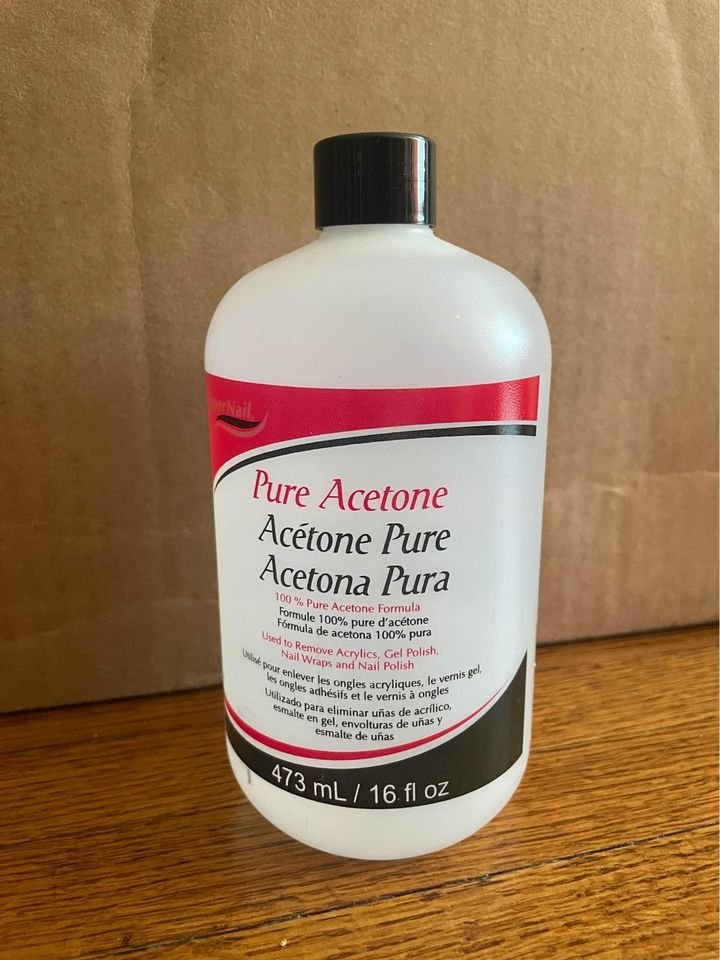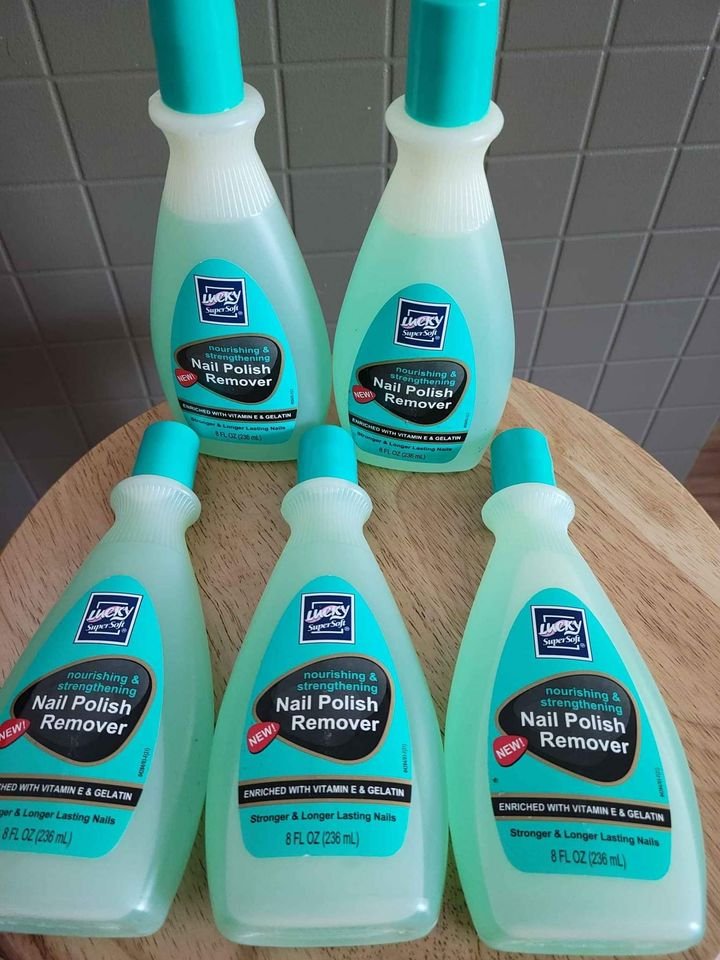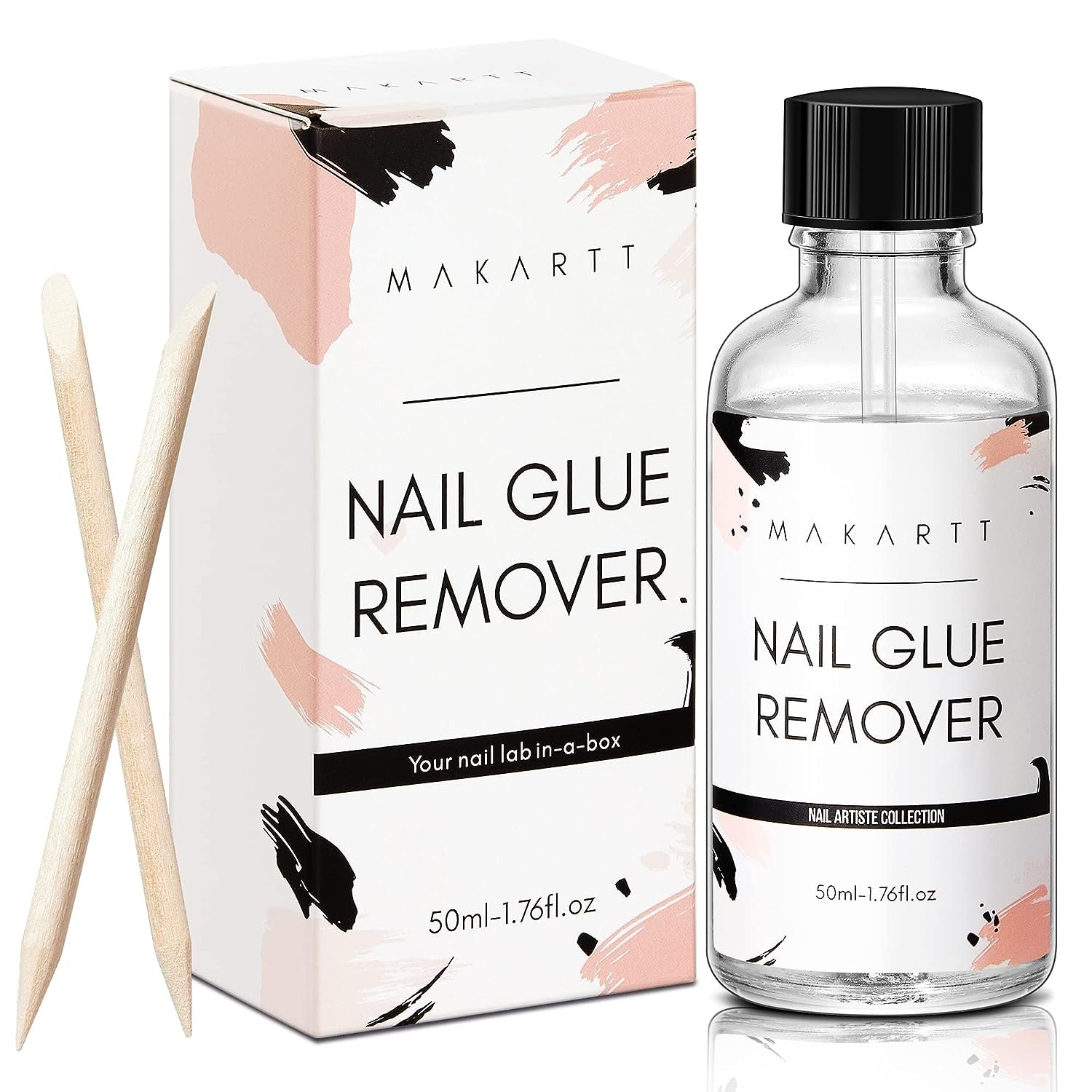There comes a time in the life of a manicure, that there has to be a removal. After a long time of protection and maintenance, you know that it’s just time to take it off.
By then the nail polish would have started to chip off or the nail begins to lift or break, so you have to remove the old one and get a new set.
In the nail industry, some solvents are used in the process of nail removal. These solvents dissolve the ingredients in the manicure, making it easier to work.
Some of the solvents used include acetone and nail polish remover. This article talks about acetone and nail polish remover, their similarities, and their differences.
What is Acetone?

Acetone is a strong, colorless liquid used in many industries including the pharmaceutical, domestic, and beauty sectors.
It is known to solvate plastics and synthetic fibers. It is used in cleaning tools, and can even dissolve super glue. It is also used in the preparation of metals before painting.
This solvent is active in most cosmetic products. You’ll find it in skin creams and nail polish removers.
Nail paint usually contains plasticizers, film formers, and color pigment, so what it does is break down the top layer of the polish.
What is Nail Polish Remover?

This is a liquid that may contain coloring, organic solvents, oils, and scents. It can be classified into acetone remover or non-acetone remover.
The main component of nail polish remover is either acetone or ethyl acetate. Nail paint remover works by dissolving colors, glues, and plastics.
Similarities Between Acetone and Nail Polish Remover
- Both are solvents
- Both are flammable
- Both are volatile
- Both have adverse health effects, especially when inhaled or ingested.
- Both can irritate the skin.
Differences Between Acetone and Nail Polish Remover
1. Components
Acetone is a single solvent compound that is used and is effective on its own without additives.
Nail polish remover contains different types of solvents. The acetone-based nail polish remover contains acetone while the non-acetone remover contains ethyl acetate.
It also contains color, some oil, and fragrance.
2. Miscibility in Water
Acetone is completely miscible with water while nail polish removers may or may not be miscible with water, depending on the components used.
3. Application
Acetone is a widely used solvent in different industries such as the beauty, plastic, and pharmaceutical industries, and also in laboratories.
Nail polish remover is only used in the beauty industry because it is crafted for the sole purpose of cleaning the polish off of nails.
4. Effectiveness
Acetone can be used to remove all kinds of manicures from basic manicures to shellac. Nail polish remover, however, is not as effective as acetone.
It takes up more minutes of scrubbing and cleaning to remove the nail polish.
5. Toxicity
Pure acetone is very harsh on the skin and can cause drying of the cuticles, whitening, brittleness, and breaking of the nails.
Nail polish remover is gentler on the cuticles and nails. It contains some moisturizing elements to moderate the during effects.
The nail industry has advanced greatly with not just nail art and styles, but also with the making of certain products for diverse uses.
Acetone and nail polish remover are under that category. While either can be used to remove nail and nail polish, care should be taken as they can irritate your skin and nails.
Avoid overusing them and exposing your fingers for too long.
Our Recommendations
Aliver

Aliver’s Gel Polish Remover is a game-changer for anyone looking to remove gel nail polish quickly and effortlessly. Say goodbye to the hassle of soaking or wrapping your nails in foil, as this professional-grade gel polish remover simplifies the process. In just 2-3 minutes, it effectively and efficiently breaks down gel nail polish, allowing for a swift and mess-free removal experience.
Makartt Nail Glue Remover

Makartt’s Nail Glue Remover is a fantastic solution for safely and effectively removing acrylic nails and press-on nails without the need for acetone. This 50ML debonder offers convenience and ease in the nail removal process, ensuring that your nails stay healthy and undamaged during the removal process. It’s essential to note that this product is specifically designed for acrylic nails and press-on nails and may not be suitable for removing gel nail polish.
FAQs on Acetone vs. Nail Polish Remover
Which is better, nail polish remover or acetone?
Acetone is the most effective way to remove nail polish, but it can be very harsh, drying out the skin and nails.
Nail polish remover works, but not as effectively as acetone. This means you’ll have to spend more time rubbing the polish off your nails. It is also gentler on the cuticles.
Is acetone and nail polish remover the same thing?
They are both the same and still different. Acetone is the most recognized type of polish remover, but there are other nail polish removers that either contain or do not have acetone in them.
What percentage of acetone is nail polish remover?
Most nail polish removers are generally based on acetone. The simplest composition 30-60% acetone, 5-20% water, and other materials.
Is acetone harmful to the skin?
If acetone gets on the skin, it can cause skin irritation. The skin may turn red, dry, and inflamed. Eye contact with acetone vapors or liquid can lead to eye damage or irritation.
What is the difference between nail polish remover with acetone and without acetone?
Non-acetone nail polish removers contain ethyl acetate or isopropyl alcohol as their active ingredient. Though they are gentler on the skin, they are less effective than nail polish removers containing acetone.
